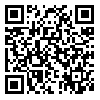BibTeX | RIS | EndNote | Medlars | ProCite | Reference Manager | RefWorks
Send citation to:
URL: http://jdisabilstud.org/article-1-2730-en.html
2- Professor, Department of Psychology, University of Mohaghegh Ardabili, Ardabil, Iran
3- Professor, Department of Psychology, University of Guilan, Rasht, Iran
4- Associate Professor, Department of Psychology, Ardebil Branch, Islamic Azad University, Ardabil, Iran
Abstract
Background & Objectives: Trichotillomania (hair–pulling disorder) is a psychological disorder whose treatment is one of the most challenging clinical and mental health issues. Despite various physical and social problems, especially psychological problems such as high anxiety and low self–esteem in people with trichotillomania, it is less commonly diagnosed and treated. Prevalence studies showed that about 1% of the total population and more than 10% of the student population suffer from trichotillomania, which was higher among female students. Therefore, due to the shortage of experimental and theoretical research in this field, as well as the occurrence of psychological problems in students and their lack of development in adulthood, the present study compared the effect of aversion therapy and hypnotherapy on reducing symptoms and increasing the self–esteem of students with trichotillomania (hair–pulling disorder).
Methods: The present research method was quasi–experimental with a pretest–posttest design with a control group. The statistical population included all students who had been referred to counselling centers and the psychological clinic of the Education Department of Bilesvar County to solve their trichotillomania disorder in 2018–2019. Of whom, 45 eligible volunteers were randomly selected and divided into two experimental groups (aversion therapy and hypnotherapy) and one control group (Each group of 15 individuals). The inclusion criteria were as follows: a psychiatrist's diagnosis of trichotillomania disorder based on the DSM–5 criteria, the age range of 10 to 18 years, attendance at all meetings, and not receiving psychological treatments at least one month before the intervention. The exclusion criteria were not attending meetings or receiving any other intervention and unwillingness to continue treatment. One experimental group received aversion therapy in 6 sessions, and the other received hypnotherapy in 8 sessions. The Coopersmith Self–Esteem Questionnaire (Coopersmith, 1967) and the Massachusetts General Hospital Hair–Pulling Scale (Keuthen et al., 1995) were used for data collection. The obtained data were analyzed using descriptive (mean, standard deviation, frequency, and percentage) and inferential statistics (1–way analysis of variance, Chi–square test, Tukey's test, and multivariate and univariate analysis of covariance) in SPSS version 16. The significance level of statistical tests was set at 0.05.
Results: The results showed that by controlling the effects of the pretest, the impact of the groups was significant, and the mean scores of the hair–pulling variable in the two experimental groups (hypnotherapy and aversion therapy) were significantly lower in the posttest compared to the control group (p=0.013). Also, the mean scores of the self–esteem variable in the two experimental groups (hypnotherapy and aversion therapy) increased significantly in the posttest compared to the control group (p=0.021). In the paired comparison of the studied groups, there was a significant difference in the mean scores of the variables of hair pulling and self–esteem between the experimental groups with the control group (p<0.001). Also, a significant difference was observed between the experimental groups' average scores of the mentioned variables (p<0.001).
Conclusion: Based on research findings, aversion therapy and hypnotherapy are effective in reducing trichotillomania symptoms and increasing the self–esteem of students with trichotillomania. However, hypnotherapy is more effective in reducing trichotillomania symptoms (focused and automatic) and increasing self–esteem than aversion therapy.
| Rights and permissions | |
 |
This work is licensed under a Creative Commons Attribution-NonCommercial 4.0 International License. |




